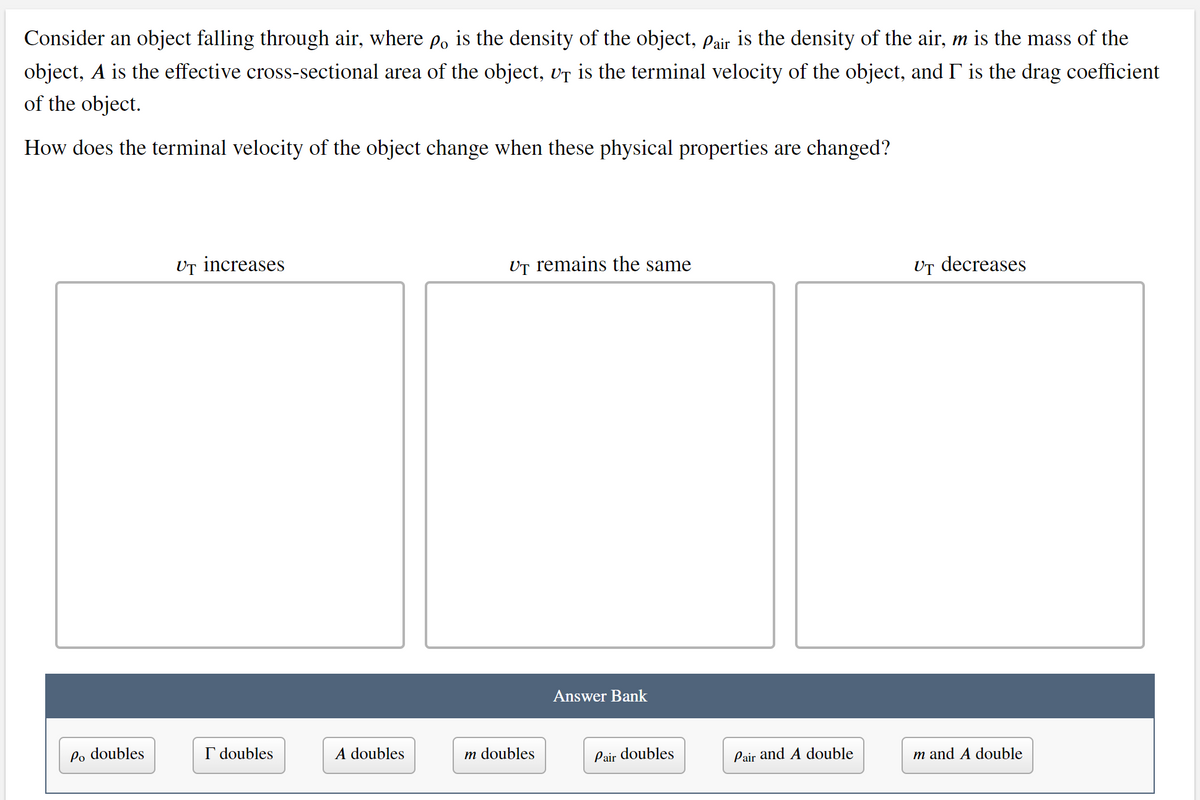Consider an object falling through air, where p, is the density of the object, pair is the density of the air, m is the mass of the object, A is the effective cross-sectional area of the object, vr is the terminal velocity of the object, and I is the drag coefficient of the object. How does the terminal velocity of the object change when these physical properties are changed? UT increases UT remains the same Ur decreases Answer Bank Po doubles I doubles A doubles m doubles Pair doubles Pair and A double m and A double
Viscosity
The measure of the resistance of a fluid to flow is known as viscosity. Most fluids have some resistance to motion, the resistance provided by the fluid is called viscosity. This resistance is created by the force of attraction between the fluid molecules. If you pour water through a funnel, it flows easily and quickly, because it has very little resistance. But if you pour honey through a funnel, it may take a little time longer, as the density of honey is high.
Poiseuille's Law
The law of Poiseuille or Poiseuille's equation states that the pressure drop of an incompressible fluid especially a liquid in a laminar flow that passes through a cylindrical tube of length L, radius r, pressure gradient ΔP, and mainly depends on the viscosity of the fluid is nothing but the pressure difference of the layers of fluids. ΔP=P1-P2
Drag Forces
Forces that occur due to the movement of fluid are known as fluid mechanics. Following are the fluids present:

Trending now
This is a popular solution!
Step by step
Solved in 2 steps









